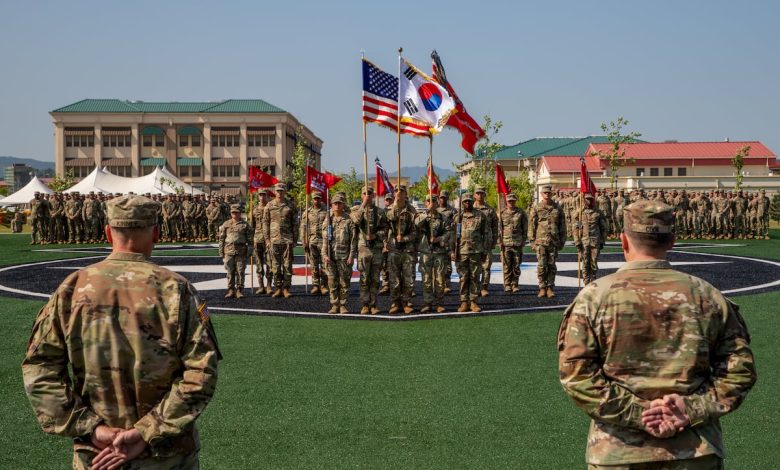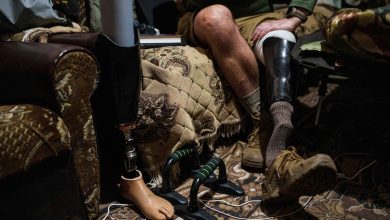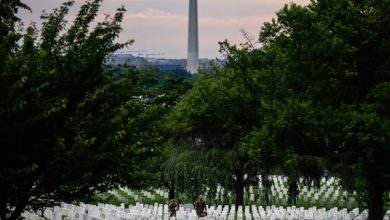Longer assignments coming soon for troops heading to South Korea

A new Pentagon directive implementing longer tours of duty in South Korea will improve force stability, support service members’ quality of life and enhance readiness in the face of regional threats, U.S. Forces Korea officials said
The directive, announced Tuesday, extends tours for unaccompanied service members assigned to South Korea from 12 months to 24 months.
The policy takes effect Oct. 1, 2025, and applies to all service members receiving orders on or after that date, though implementation timelines may vary by service branch, officials said. The directive follows a February announcement that extended tours for military families moving to South Korea from 24 months to 36 months.
Currently, there are roughly 28,500 military personnel stationed in South Korea, with the Army having the largest contingent of permanent party personnel there, at about 14,000 personnel.
For more than a decade, officials have discussed extending tour lengths in South Korea. Air Force Col. William Parker, director of personnel for U.S. Forces Korea, described the change in tour lengths as a “tour normalization policy.” The South Korea policy is slightly different than policies in other overseas locations such as Germany and Japan, “but our intention is to be as similar to those locations as possible,” Parker said.
Under the “3-2-1 Tour Normalization Policy,” accompanied tours will be 36 months and unaccompanied tours will be 24 months. Twelve-month unaccompanied tours will only be available as an exception, which occurs when a service member formally requests to bring their family, but the request can’t be supported because of operational or installation support or infrastructure constraints, officials said.
“There’s no desire to separate service members who have dependents from their family members any longer than we have to,” Parker said.
There’s plenty of housing, according to Parker, but limitations at schools and medical support are the two biggest factors. Medical capacity varies by installation. For example, there’s a new hospital at Camp Humphreys, he said, but more medical providers are needed there.
The new policy doesn’t affect service members currently stationed in South Korea. They won’t be required to involuntarily extend their tours, but as in the past, they can do so. The services are reviewing their policies on Korea assignment incentive pay, where troops are given incentives to extend their tour of duty in South Korea, according to Parker.
Although the initiative began well before the Pentagon’s May directive to the services to halve spending on permanent change of station, or PCS, moves, it supports DOD’s broader efforts to reduce the frequency of PCS moves and enhance readiness, family stability and quality of life, Parker said.
The initiative will save about $90 million a year, according to Parker.
“This will obviously save a lot of money, but that’s not the driving factor here. It’s hard to quantify the savings and benefits from a readiness and team cohesion perspective. It’s a challenge for our commanders here to have constant turnover of their teams,” he said.
With regional threats posed not just by North Korea, but with China and Russia in close proximity, “we really need the continuity of our service members to provide that regional expertise here, to develop and retain that,” Parker said.
Meanwhile, quality of life improved for a number of service members living in South Korea, who saw a bump in their paychecks on July 1. The Cost of Living Allowance index was just reset successfully for the first time in more than nine years, Parker said. That amounts to an increase for about three-fourths of the personnel on the peninsula, with some more remote places seeing significant increases.
With quality-of-life improvements, South Korea is ready for these longer tours, Parker added. Through infrastructure investments, including those by the Republic of Korea, 80% of the infrastructure at Camp Humphreys is 10 years old or less, including a new medical facility, a new commissary and new barracks with more being built, he said.
Officials have also been working to increase the number of command-sponsored families who can come to South Korea. Since the end of fiscal 2024 to the beginning of fiscal 2026, officials will have increased their command sponsorship capacity across the peninsula by 27%, Parker said. Currently, there are roughly 5,400 to 5,700 families, a number fluctuating because of summer moves. But they’ll grow that number to around 6,500 families over the next year or so, he said.
In addition to family stability, there’s also some benefit from the spouse employment perspective, Parker said. A two-year tour is a relatively short period of time to find and maintain employment.
“So some of the feedback we’ve received is that this will make spouses more employable,” he said.
Service members should contact their respective personnel offices for specific guidance about the new policy, Parker said.
“I feel strongly this is the right thing. With every change, there will be people that have concerns or questions,” he said. “There may be some challenges that we have to overcome, but we won’t know that until we drive the change. We think the timing’s right.
“The quality of life is fantastic here both on and off post. The mission is more important than ever in this region, so it’s the right thing.”
Karen has covered military families, quality of life and consumer issues for Military Times for more than 30 years, and is co-author of a chapter on media coverage of military families in the book “A Battle Plan for Supporting Military Families.” She previously worked for newspapers in Guam, Norfolk, Jacksonville, Fla., and Athens, Ga.
Read the full article here









